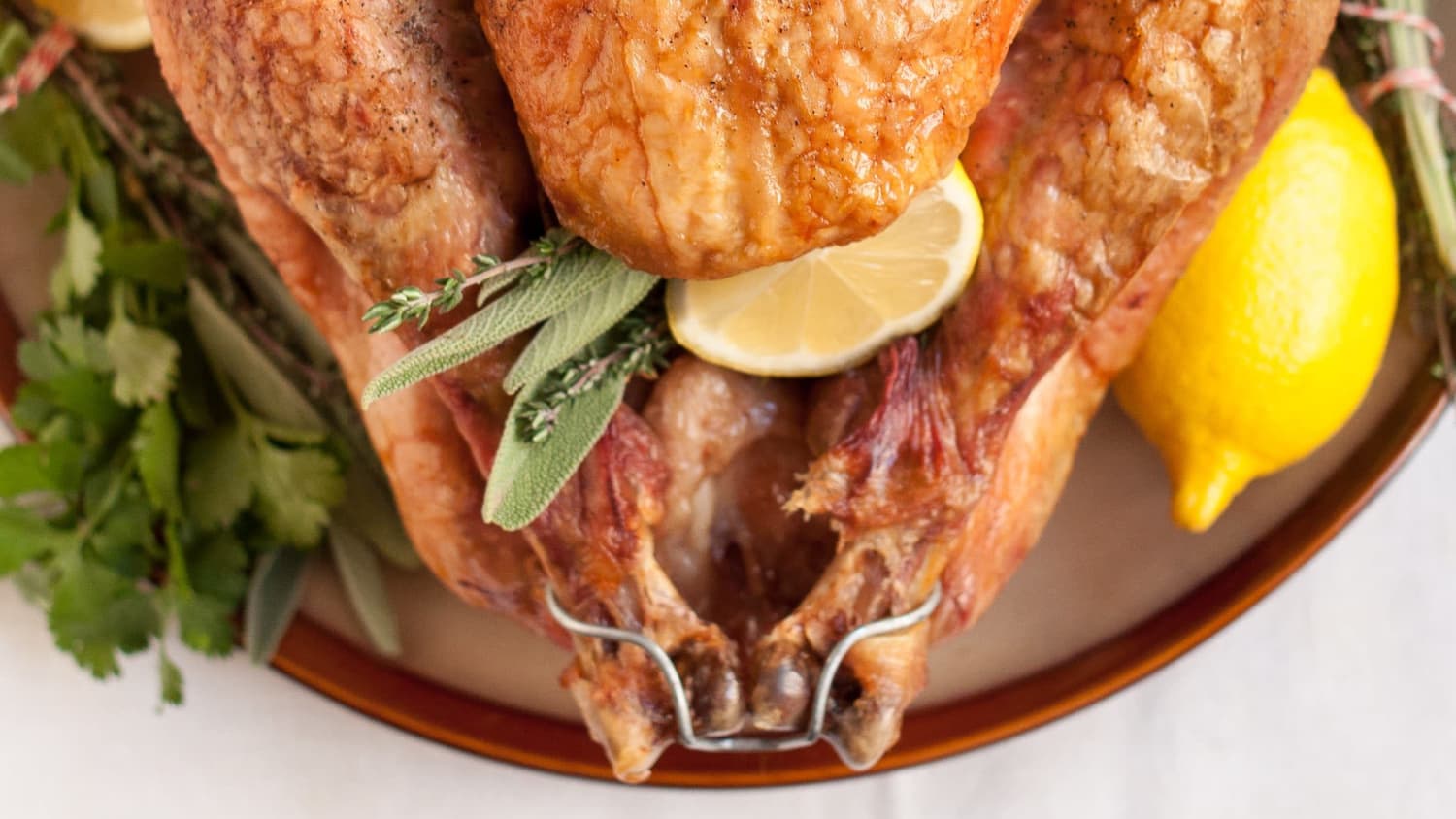How To Cook a Frozen Turkey
3.7
(11)
Your folders
Your folders
Servings: 1
Cost: $8.04 /serving
Author : Emma Christensen

Ingredients
Export 3 ingredients for grocery delivery
Instructions
Step 1
Heat the oven to 325°F. Place a rack in the bottom third of the oven.
Step 2
Place the turkey in the roasting pan: Unwrap the turkey and place it on top of a roasting rack inside a roasting pan. Don't try to remove the giblets or season the turkey right now.
Step 3
Roast for 2 1/2 hours. Try not to open the oven door or let out too much heat. After 2 1/2 hours, your turkey should just be starting to turn golden.
Step 4
Check the temperature: This temperature check is just to get a reference point for how quickly the turkey is cooking. At this point, the breast and thighs will likely be in the low-100°F range.
Step 5
Remove the giblets: The turkey should be thawed enough at this point that you can remove any trussing mechanisms (although most are safe for roasting in the oven; check the turkey's packaging for information). Check the neck cavity and remove the bag of giblets if you see it. Check the cavity of the turkey for the neck or giblets, and remove them if you can. If you can't get to the giblets, or if the giblets are still frozen inside the turkey's cavity, continue roasting, but check every 30 minutes to see if you can remove the giblets. Be careful — the turkey is still mostly frozen, but the juices around the surface are hot.
Step 6
Tuck the wings behind the turkey: You can also leave them untucked — either way is fine.
Step 7
Season the turkey: Brush the turkey with melted butter. Sprinkle with salt, pepper, and any other seasonings you'd like to use. Rub in the spices with your fingers.
Step 8
Tip the turkey to pour out any juices: Juices tend to collect inside the cavity of the turkey as they melt. Lift the roasting rack and tilt the turkey so these juices pour out into the pan.
Step 9
Continue roasting: Refer to the chart above for estimated total roasting times. Check the temperature in the breast and thigh meat every hour or so to gauge how fast it's cooking, and tilt the pan to pour out any juices. Brush the turkey with more butter if you'd like. If the skin over the breasts is browning more than you like, cover loosely with foil. If the pan starts looking very dry or if the drippings start looking burnt, add a few cups of water or broth.
Step 10
Cook until the turkey registers at least 165°F in all areas: The breast meat is the thickest part of the turkey and will cook the slowest. The middle of the turkey, closest to the bone, will also be the last to cook through; the temperature may be well above 165°F close to the surface, but below temperature deeper in the meat. Make sure you take the temperature in multiple places and also at multiple depths in the meat to be sure you're getting an accurate temperature reading throughout. (Just be sure not to hit the bone, which will give you a false temperature.)
Step 11
Rest the turkey for 30 minutes. Set the turkey aside to rest for at least 30 minutes. Use this time to make gravy, if desired.
Step 12
Carve the turkey and serve. Transfer the turkey to a cutting board and carve.